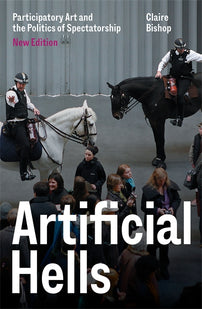Haunted Archives: Memory, Storage and the Politics of Digital Preservation
“How does digital memory and storage reshape our personal lives and memories, and what are the broader ecological costs?”

Florencia Vallejos (@florvva), Carpeta Fotos, 2020, 5”20. Image courtesy of the artist.
‘We’re drowning in a sea of data.’ These words, written on the NSA’s website in the early 2010s and unearthed by Hito Steyerl in her 2017 essay of the same name, now read more like a tautology than a warning. Nearly a decade later, what’s changed? With digital storage infrastructure, data mining, AI training systems and cloud technologies expanding at breakneck pace, the scale and speed of data extraction and storage has gone haywire.
In many ways, Steyerl’s most recent book, Medium Hot: Images in the Age of Heat, reads as a response to this escalation. Focused on the ecological impact of digital storage and AI image-making, Steyerl asks how we can justify the environmental ramifications of such outputs under the guise of creativity. In other words, how is AI art and image-generation used as an excuse to cook the planet? While Medium Hot specifically focuses on image-making, I want to explore a different but related question: how does digital memory and storage reshape our personal lives and memories, and what are the broader ecological costs?
One of the most immediate questions raised by digital storage is how it has transformed the nature of human memory itself. What does having seemingly unlimited photo archives accessible via cloud storage do to our capacity to remember? This is not necessarily a ‘new’ question; many theorists and artists have explored the link between technology and memory. In his essay film Sans Soleil, Chris Marker laments that the images in his film have replaced his own memories. Discussing Marker’s concern in the introduction to Gramophone, Film, Typewriter, media theorist Friedrich Kittler explains this phenomenon rather dryly: ‘once storage media can accommodate optical and acoustic data, human memory capacity is bound to dwindle.’[1] Digital storage, in short, makes you forget.
This dynamic is rendered with painful clarity in Florencia Vallejos’ moving image work Carpeta Fotos (2020). Composed of digitally rendered scenes drawn from the artist’s personal archive, which comprises over a decade’s worth of photos and videos, the film explores how digital storage can overwrite memory itself. Vallejos’ narrator admits she can no longer remember events unless they appear in her own archive. She replays old clips, searching not just for memories but for a sense of identity. There is an undertone of anxiety in her search; midway through she asks, despairingly, ‘where have my files gone?’ By the end, however, she is resigned: ‘my life is an archive I can’t find.’[2] If the archive promises order and preservation, Carpeta Fotos unveils its instability. It recognises that we have become reduced to our archive; the way we document our lives digitally becomes the cornerstone for our public perception, overriding our own memories and perception of self.
[book-strip index="1"]
This is the tragedy of the archive that Derrida identifies: the compulsion to preserve, to forestall forgetting, often produces the very loss it fears. Archiving is never neutral; it is an act of selection, repression and construction. To choose what to preserve is to decide what is excluded, erased, or rendered inaccessible. As Derrida puts it, ‘the archive always works, and a priori, against itself.’ It promises to preserve our memories and our histories, yet these are always incomplete, shaped by power dynamics and deliberate omissions. Archiving is an act of erasure, a haunted practice defined as much by what it includes as what it renders invisible. The compulsion to remember soon becomes a mechanism of forgetting.
Digital storage follows a similar logic. It offers the illusion of permanence, at the same time as its systems are inherently volatile, subject to upgrades that render them outdated. Data formats become obsolete, servers fail, access protocols change. Magnetically stored data decays faster than paper. [3] It’s a fallacy to believe that digital storage safeguards against forgetting, that it’s more likely to endure through time. And yet, there’s a duality at play here. Just as with the archive, digital media has a haunted quality; it never fully disappears. As Wendy Hui Kyong Chun writes, ‘information is curiously undead, constantly regenerating, and users save things, if they do, by making the ephemeral endure.’[4] We store everything and remember nothing, even as the traces of our lives (messages, photos, old profiles, metadata) circulate endlessly online.
In Loveboard (2023), Felipe Casanova ruminates on the paradoxes of digital memory, how it can be both ephemeral and ‘curiously undead.’ The film tells the story of a breakup between two lovers through fragments of their digital archive: texts, voice notes, photos and videos sent to one another in moments of tenderness. Unlike Carpeta Fotos, Casanova’s film isn’t centred on an absence of digital memory, but an excess of it. When relationships end, what remains is the archive. Loveboard lingers on the spectral qualities of digital memory, the affective burden we are placed under when our undead data comes back to haunt us.
 Felipe Casanova, Loveboard, 2023, 17”. Image used with artist's permission.
Felipe Casanova, Loveboard, 2023, 17”. Image used with artist's permission.
Considered alongside one another, these films speculate on the nature of memory, lived experience and relationships in the digital age, when reliance on ephemeral technologies and automation seems to mirror the precarity of everyday life. The belief that the ephemeral will endure is as misguided as the algorithmic and extractive systems that shape our present. Our desperation to remember leads us to forget; our attempts to regain agency unravel the sense of self we hoped to preserve. We are always already losing our memories.
But memory isn’t all that’s at stake. Behind the spectral aesthetics of our digital lives lies a profoundly material infrastructure, one with catastrophic environmental consequences. Data centres, the physical sites that sustain cloud storage, AI systems and internet exchanges, are estimated to consume roughly 2-3% of the global electricity supply, to say nothing of the minerals, water and heat exhaust required to power and cool them. Often located in rural areas to satisfy their ‘insatiable demand for water and power,’[5] data centres remain shrouded in secrecy, their expansion taking place largely out of public view. Even as awareness of the environmental costs of AI and the cloud increases, the architecture that sustains them remain intentionally elusive. This opacity helps to maintain the myth of digital immateriality: that our online lives exist in a weightless ether, untethered from the extractive, logistical systems that are foundational to them.
As with the archive, this infrastructure is never politically neutral. Data centres have become financialised assets, owned and operated not just by tech giants, but increasingly by private investment firms and hedge funds who transform them into tradeable, fungible and rentable assets. As Brett Christophers argues, we now live in an ‘asset manager society,’ where public infrastructure, from housing and water to digital memory itself, is increasingly controlled by private investors. The systems that promise to preserve our memories are quietly bankrolling the ultra-rich at an immense planetary cost. In this light, digital storage appears less as a neutral tool of preservation and more a mechanism for profit, power and control.
The extractive logic of digital memory extends far beyond finance. Scholars have described data centres as instruments of data colonialism, supporting global extractivist infrastructures that disproportionately impact the Global South. These regions are often selected as sites for data centres due to their proximity to rare earth minerals required to build and power them. At the same time, the extraction of these minerals often exacerbates existing water injustices, contributing to mounting geopolitical tensions and deepening the ecological precarity brought on by the climate crisis. If digital storage promises preservation, it does so at immense ecological and geopolitical cost. The more we entrust our memories to platforms and clouds, the more we participate in systems built on transnational extractivism and exploitation for financial gain.
This is precisely the terrain of Hito Steyerl’s Medium Hot. In her latest book, she turns to the infrastructures that sustain the loaded images we now consume, tracing the energy, labour and violence that power contemporary visual culture. Steyerl asks what it means to create with and for machines, questioning the legitimacy, and the desirability, of such outputs. She is unequivocal: images that fuel the arms trade, displace workers, and accelerate planetary collapse can no longer be seen as impartial or innocent. While AI-generated images and endless cloud archives are often deliberately framed as apolitical, ‘progressive’, or forward-looking, their material outputs and the logistical infrastructures that support them are anything but. Seen in this light, the digital archive isn’t just haunted by forgotten memories or lost data, it’s haunted by the very future it forecloses.
[1] Friedrich Kittler, Gramophone, Film, Typewriter (Stanford: Stanford University Press, 1999), 10.
[2] The original Spanish phrase is, ‘mi vida es una archivo que no encuentro.’
[3] Wendy Hui Kyong Chun, “Crisis, Crisis, Crisis, or The Temporality of Networks”, in Updating to Remain the Same Habitual New Media (Cambridge: The MIT Press, 2017).
[4] Chun, 78.
[5] Tung-Hui Hu, A Prehistory of the Cloud (Cambridge: The MIT Press, 2015), 79.






